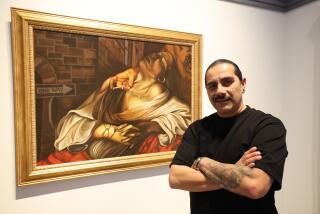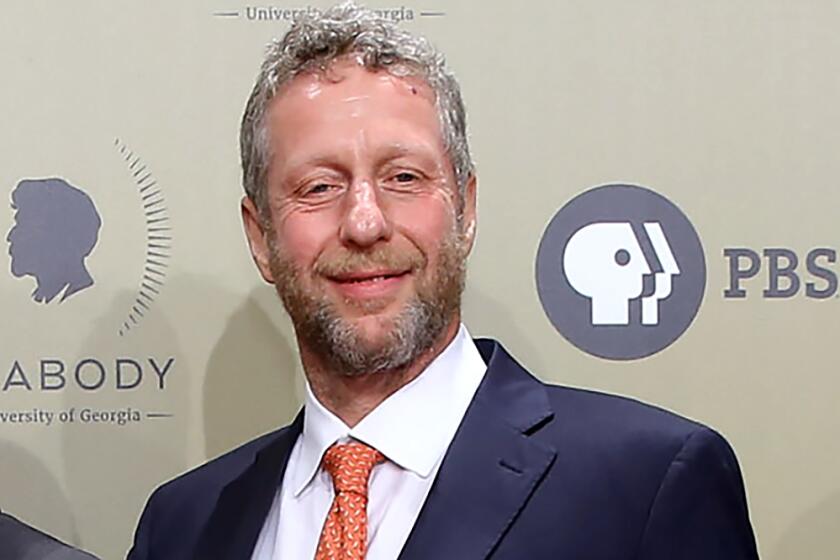Did someone find a $136-million Caravaggio painting in the attic?

At a Tuesday news conference in Paris, art expert Eric Turquin, right, and auctioneer Marc Labarbe present a work of art that Turquin and others believe was created by Italian Baroque artist Michelangelo Merisi da Caravaggio.
A painting recovered from a family attic near Toulouse, France, could be a long-lost work by Caravaggio -- and may be worth as much as 120 million euros ($136.5 million).
While some experts believe the work to be authentic, absolute certainty could be difficult to attain, with at least one expert saying it isn’t a real Caravaggio.
The painting, which depicts the beheading of Holofernes in a scene from the Book of Judith, was unveiled Tuesday at a news conference in Paris. It is believed to have been created between 1600 and 1610.
Officials haven’t revealed the identity of the family, but reports in the French media state that the house where the painting was found dates from the 17th century and that the painting was found two years ago, covered with dust, in the attic.
Among the details that suggest an authentic Caravaggio is the the way the artist created the blood spray from Holofernes’ neck, said Eric Turquin, a French art expert, in a report from the France 24 cable news channel.
“It was done with a single brush stroke. A copier or a less talented artist wouldn’t have done it like that,” said Turquin, who consulted with other experts, including those at the Louvre and in Caravaggio’s native Italy.
He also showed how the fingernails depicted in the painting have a rough, almost unfinished quality, which he said indicates the work of a true master.
Another art expert supporting the thesis is Nicola Spinosa, a Caravaggio expert from Naples, who has described the work as “a true original” by Caravaggio, according to a report from the Agence France-Presse.
But the publication Le Quotidien de l’Art cited another Caravaggio specialist, Mina Gregori, saying that the painting isn’t authentic, adding that the work demonstrates a high caliber of artistry nonetheless.
“We will never be able to definitively say if Caravaggio himself held the brush,” said Annette Douay, an art authentication expert, to FranceTV Info.
“It could be a workshop copy, created by an apprentice, for example. That’s why there are often disputes among experts.”
The French government has put an export ban on the painting, saying in a recent statement that the work should remain on French soil in order to better study its origins.
ALSO
Computer-generated ‘Rembrandt’ painting unveiled, but not everyone is impressed
Mayor Eric Garcetti announces artists for L.A.’s first public art biennial to be held this summer
Maya Angelou in dance: How Complexions Contemporary Ballet will put poetry in motion
More to Read
The biggest entertainment stories
Get our big stories about Hollywood, film, television, music, arts, culture and more right in your inbox as soon as they publish.
You may occasionally receive promotional content from the Los Angeles Times.







